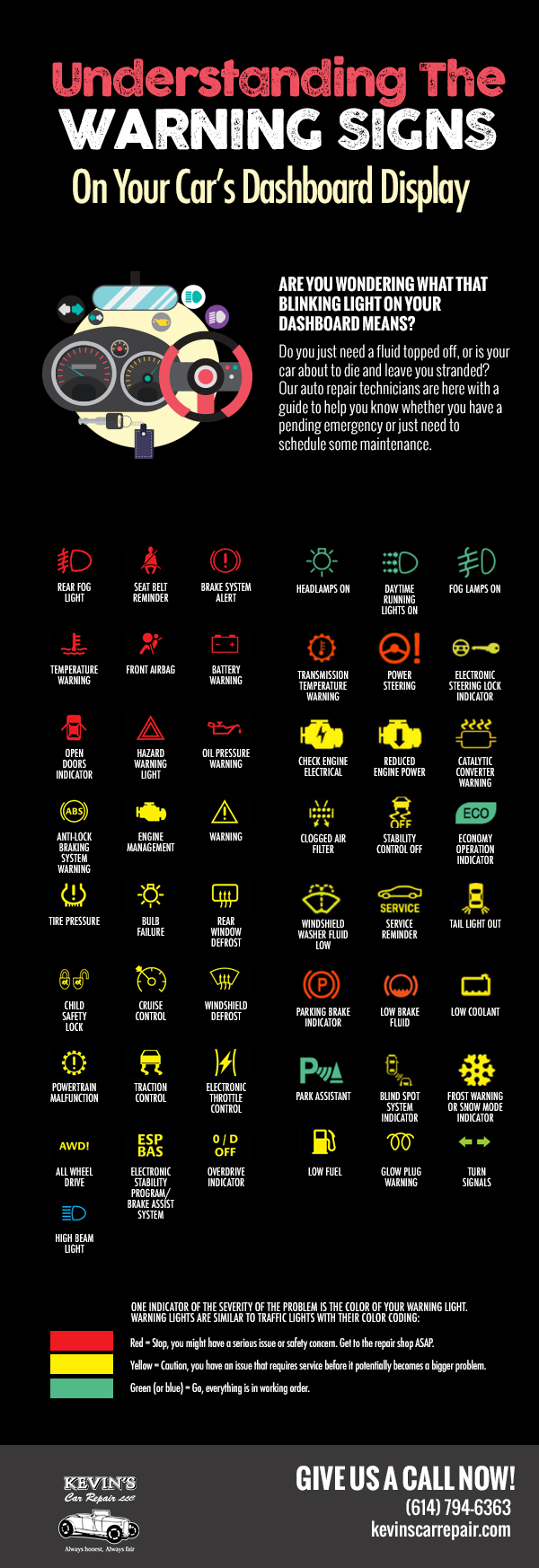When you lag the wheel, those little warning lights on your vehicle's dashboard can be rather puzzling. What do they mean, and should you be worried? Comprehending these signals is essential for your automobile's well-being, however it does not have to be a challenging task. By deciphering the enigma behind each light, you'll be outfitted to manage possible problems properly and keep your car running efficiently. So, following time a caution light flashes, do not panic - arm yourself with understanding and take control of the scenario.
Relevance of Auto Warning Lights
Recognizing the significance of your auto's caution lights is crucial for maintaining your automobile's health and wellness. These lights work as your vehicle's communication system, informing you to possible issues that could jeopardize your safety when driving or cause costly repair services if ignored. By focusing on these warnings, you can deal with issues early and stop further damages to your automobile.
Neglecting advising lights can lead to significant consequences, such as engine failing, brake malfunctions, or even mishaps. These lights are designed to inform you of issues ranging from reduced tire pressure to engine malfunctions, providing you the opportunity to take action prior to the scenario intensifies. Regularly examining and comprehending these warnings can save you time, cash, and guarantee your safety while driving.
Along with maintaining you risk-free, responding immediately to cautioning lights can also aid lengthen the life expectancy of your vehicle. By dealing with issues at an early stage, you can stop little troubles from intensifying right into significant fixings, ultimately saving you time and money in the future. Remember, Recommended Online site are there for a reason - do not neglect them!
Common Warning Lights and Meanings
When it concerns driving your cars and truck, understanding common warning lights and their definitions is necessary for your safety and automobile upkeep. Below are a few common warning lights you may come across:
1. ** Examine Engine Light **: This light shows an issue with your engine. Maybe something small like a loose gas cap or something more significant like engine misfiring.
2. ** Battery Light **: This light signals an issue with your auto's billing system. hop over to this web-site could indicate a malfunctioning battery, alternator, or other associated components.
3. ** Oil Pressure Light **: When this light comes on, it implies your engine may be running low on oil or experiencing reduced oil pressure, which can bring about engine damage otherwise attended to quickly.
4. ** Brake System Light **: This light indicates a concern with your stopping system. It might mean reduced brake liquid levels or a trouble with the brake system that needs immediate attention.
Recognizing these common caution lights will aid you determine potential concerns early and protect against more significant problems later on.
Just how to Reply To Warning Lights
In case a warning light brightens on your vehicle's control panel, it's crucial to react promptly and appropriately. When a warning light comes on, the initial step is to consult your owner's manual to understand the particular issue shown by the light.
Some lights require instant attention, while others might suggest a much less urgent issue. If classic car restoration is red or flashing, it's normally an indicator of a major issue that requires prompt activity. In such situations, it's recommended to pull over safely, switch off the engine, and look for expert help.
For yellow or orange caution lights, while they may not need prompt attention, it's still crucial to attend to the underlying concern quickly to avoid additional damages. Regular upkeep and assessment can assist protect against warning lights from beginning suddenly.
Verdict
Finally, recognizing your cars and truck's caution lights is vital for preserving your vehicle's health and wellness. By on a regular basis checking and responding to these warnings, you can attend to possible problems early and avoid costly repairs or security risks. Remember to consult your proprietor's handbook for information on different warning lights and constantly take immediate action for red or flashing lights. Remain proactive and maintain your car running smoothly!
